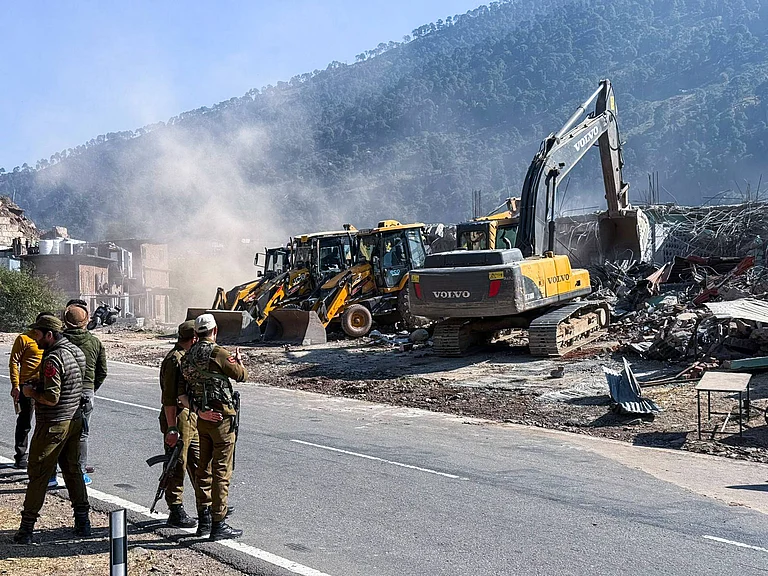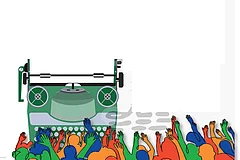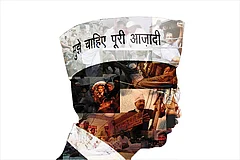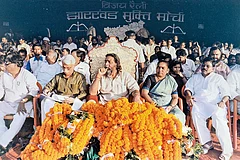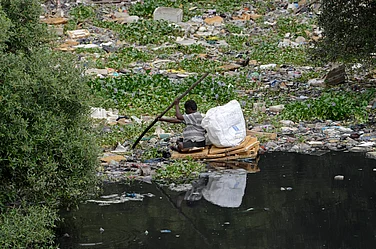After the death of her father, Mufti Mohammad Sayeed, on January 7, 2016, Mehbooba Mufti was reluctant to become chief minister. One of her senior ministers at that time, when asked about the People’s Democratic Party’s (PDP) future course, said: “The PDP is Mehbooba Mufti. She has created this party, and she is the party.” This observation sums up the essence of the PDP.
In 2014, the PDP had the largest number of assembly seats in Jammu and Kashmir (J&K), totalling 28. However, a decade later, PDP leaders face criticism from the National Conference (NC), which asserts that the PDP has undergone a regressive transformation since then. At present, the PDP is asking for one seat from the INDIA bloc for Mehbooba to contest in the upcoming polls. However, the NC is refusing this request, citing doubts about the PDP’s ability to secure victory in the Anantnag-Rajouri constituency, once considered a stronghold of the PDP. In the last assembly elections, south Kashmir had largely voted for the PDP.
Since June 19, 2018,—following the BJP’s withdrawal of support to the PDP government—Mehbooba has been actively redefining her party’s identity, meticulously reconstructing it. Having been instrumental in founding the PDP back in 1999, Mehbooba’s leadership has been pivotal in its development.
She started her political career in 1996. She was a law graduate from Kashmir University and her father Mufti Mohammad Sayeed was in the Congress party then. In 1996, when militancy was at its peak, with the valley having around 6,000-7,000 militants operating, many politicians were reluctant to fight elections under the Indian Constitution. Mufti convinced his wife Gulshan Begum to stand for election in Pahalgam and his daughter Mehbooba to fight in the Bijbehara constituency. Mehbooba won the election, but her mother lost. Since then, there has been no looking back for her.
Even after winning the polls in 1996, she would go to the villages and raise human rights issues. The PDP with Mehbooba in-charge brought different politics. Her detractors referred to it as soft separatism. The PDP called it pro-people politics.
The NC’s politics had created such a vacuum in the state that within four years, the PDP was seen as an alternative to the grand old party, the NC. In the 2002 elections, the PDP won 16 seats and with the support of the Congress, it formed the government with Mufti Mohammad Sayeed as the chief minister. Even while in power, the party’s rhetoric continued around soft separatism with Mehbooba being the loudest voice. During those times, Srinagar saw billboards with then Pakistan President Pervez Musharraf’s and then Prime Minister Atal Bihari Vajpayee’s pictures prominently displayed.
Mufti would often talk about the opening of the Srinagar-Muzaffarabad road for travel and trade. Mehbooba herself visited Uri in 2005 to attend a rally organised to showcase the opening of the road between the ‘two Kashmirs’. The roads were opened subsequently. The road, which was one of the biggest confidence-building measures (CBMs) between India and Pakistan regarding J&K, is now closed.
The PDP with Mehbooba in charge brought different politics. Her detractors referred to it as soft separatism. The PDP called it pro-people politics.
In 2008, it was widely seen as Mehbooba’s decision to pull out from Chief Minister Ghulam Nabi Azad-led Congress government after a series of civilian killings in Kashmir at the hands of security forces during mass agitations against the transfer of land to the Amarnath Shrine Board. The party increased its tally from 16 to 21 in the state assembly elections held in 2008-2009, but couldn’t form the government. In the next six years, J&K saw NC vice-president, Omar Abdullah, as chief minister and the PDP its vociferous opponent with Mehbooba in charge. In the 2014 elections, the PDP secured 28 seats. The NC was reduced to 15 seats.
In 2015, after much negotiation, the PDP allied with the BJP to form the government with Mufti Mohammad Sayeed as chief minister. The party had fought the elections to keep the BJP at bay. But it ended up forming the government with the BJP. It was an ideological U-turn for both the parties.
In the Agenda of Alliance (AoA), the PDP got an assurance from the BJP to put Article 370 in deep freeze for six years. In the AoA, both the parties agreed to follow former Prime Minister Vajapyee’s “Insaaniyat, Kashmiriyat aur Jamhooriyat” approach towards Kashmir, while stating that the coalition government would facilitate and help initiate a sustained and meaningful dialogue with all internal stakeholders, which would include all political groups irrespective of their ideological views and predilections.
The AoA talked about confidence-building measures such as enhancing people-to-people contact on both sides of the LoC; encouraging civil society exchanges; taking travel, commerce, trade and business across the LoC to the next level; and, opening new routes across all three regions to enhance connectivity. Though the common minimum programme conceded that both parties have historically held different views on the Armed Forces (Special Powers) Act (AFSPA), and the need for it in the state at present—as part of the agenda for governance of the PDP-BJP alliance—the AoA, however, said that the coalition government will examine the need for de-notifying ‘disturbed areas’. “This, as a consequence, would enable the Union government to take a final view on the continuation of AFSPA in these areas,” the AoA read.
About the return of power projects, the AoA had said that in order to address the real source of J&K’s fiscal problem they must pave the way to make J&K a fiscally autonomous state. The alliance initially took off on a good note, but soon inherent contradictions between the alliance partners started surfacing.
In November 2015, Prime Minister Narendra Modi addressed a rally with Mufti Sayeed in Srinagar. Mehbooba and other leaders were on the stage. Mufti attempted to offer some advice to the prime minister about embarking on a big-brotherly friendship and dialogue with Pakistan, suggesting that J&K could become a bridge between the two countries. The prime minister was next to speak, and he rebuffed Mufti. “I don’t need advice or analysis from anyone in this world on Kashmir,” Modi said. With this, Modi defined the alliance of the PDP and the BJP in J&K and beyond. The PDP had embarked on the alliance with the BJP on two counts: that the BJP is ‘Kashmir illiterate’ and the party can handle it, and the second was that the “alliance with the BJP is like going to gallows with the hope of a trophy”. Subsequent events showed that the BJP was neither ‘Kashmir illiterate’ nor was it going to give trophies to anyone keen to go to the gallows. The PDP is yet to respond to the logic behind its alliance with the BJP.
MORE FROM THIS ISSUE
On August 5, 2019, ahead of the abrogation of Article 370, Mehbooba was arrested and later booked under the Jammu and Kashmir Public Safety Act, 1978. While Mehbooba was jailed, her party’s most senior leaders joined the Apni Party. Mehbooba says New Delhi broke the party. Now facing the worst-ever crisis since its foundation, Mehbooba, after her release, is trying to remake her party, and at the same time, she is emerging within the mainstream as the leader who stood up to New Delhi after the abrogation of Article 370. The task for her is hard, but even those who have left her party say she is capable of building the party. Will she? The Lok Sabha elections will tell.
(This appeared in the print as 'Ideological Backtrack')







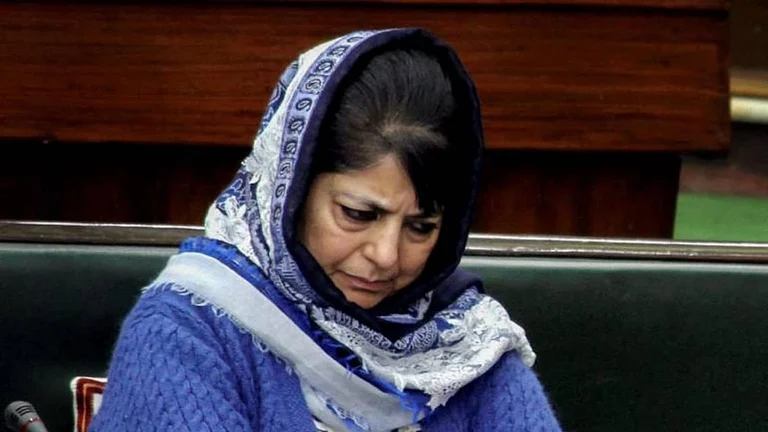

.png?auto=format%2Ccompress&fit=max&format=webp&w=768&dpr=1.0)
